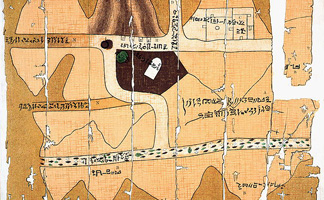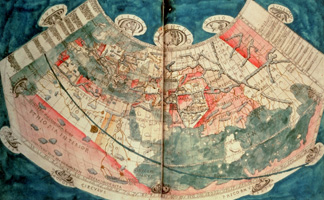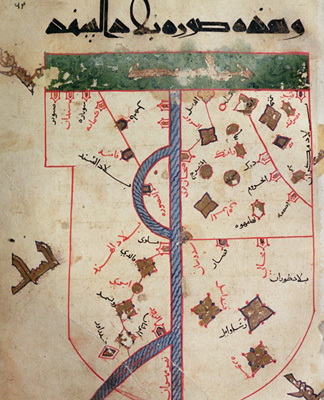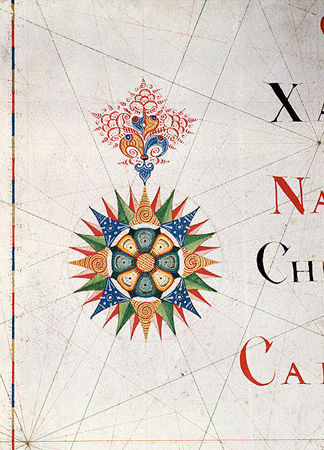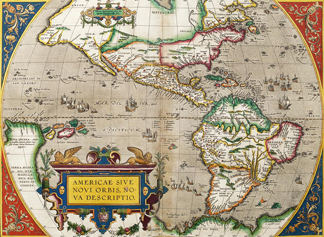Published 06/10/2011
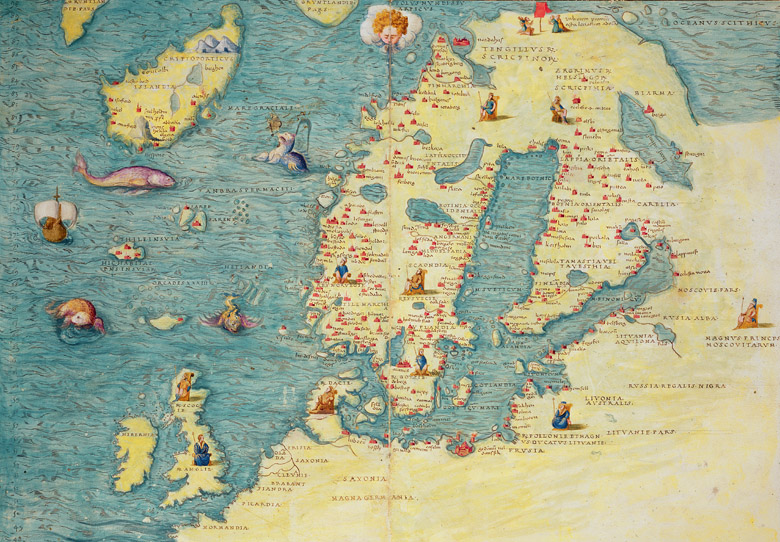
Ancient Mapmaking The Turin Papyrus Map from ancient Egypt c. 250 B.C.E., considered to be the oldest topographical map, was thought to be used for mining. It details where gold deposits can be found in the hills, as well as noting differences in soil and rock types. Where the Egyptian papyrus attempts to render a real accounting of the land, the Babylonian World Map c. 600 B.C.E. is a symbolic representation of the Babylonian worldview. For example, it deliberately omits their Persian and Egyptian neighbours. |
|
| The World According to Ptolemy Perhaps no one had more influence over cartography than Ptolemy (90-168 CE). He believed that the earth could be mapped accurately utlilizing astronomy and mathematics, and reinforced the idea presented by several other Greek scholars, including Aristotle, that the earth was round. His eight-volume atlas, Geographia, was monumental in providing a 'map' for how to render the earth in two dimensions and how to use latitude and longitude to determine location. Ptolemy's tome was the pervasive reference up until the Renaissance period. In fact, Columbus may not have gone on his momentous voyage if it weren't for Ptolemy's striking error in calculating the size of Eurasia! |
The Middle Ages Muslim scholars in the early Middle Ages set out to refine mapmaking traditions, particularly those of Ptolemy. The patronage of Abbasid caliph al-Ma'mun enabled scholars to define the measurement of the mile in comparison to the Greek standard, the stadion. This, in turn, enabled them to calculate the circumference of the earth. During the 9th century Muhammad ibn Musa al-Khwarizimi, a Persian scholar, revised and corrected Ptolemy's calculations in his "Book on the appearance of the Earth." Later maps are now believed to be based on his calculations rather than Ptolemy. Muslims were prolific mapmakers, with many regional schools of thought (example. right). As Muslim cartography was getting more scientific, the opposite was happening in Europe. The spread of Christianity influenced the way people thought of the world, most maps of this period represented the world one of two ways; a single land mass surrounded by ocean or "the four corners" ideal mentioned in the Bible. Mappa Mundi (or, cloth of the world) is a term used to describe European maps from this period. |
|
| The Age of Exploration Leading up to and during the Renaissance era, navigational maps took center stage and provided a stark contrast to symbolic maps of the time. As people's knowledge of the world grew through commerce and colonial expansion, the race was on to find new trade routes and raw materials to exploit. The results of surveying coastal territory became known as a portolan chart. The Catalan Atlas c.1375 is an important example of early navigational maps as it provided coastal information such as tides and featured the first compass rose. The compass rose (or wind rose) was a navigational tool used to display the orientation of the cardinal directions, and is still used today. Unlike many other maps, North is shown at the bottom of the map instead of the top. During the 15th and 16th centuries, the invention of the printing press and advances in mathematics greatly impacted cartography. Important maps during this period are Martin Waldseemuller's map of 1507 showing the entire longitude of the earth and maps by Juan de la Cosa during his travels with Columbus to the New World. The Mercator Projection, several centuries ahead of its time, became the standard for nautical cartography because of the way it laid out the globe in a linear fashion. |
|
|
The Golden Age of Cartography
From the mid-16th century through the 17th century, the Dutch dominated the art of commercial cartography. Maps and atlases, like works of art, suddenly became sought after possessions and an extensive trade of Dutch maps began worldwide. In 1570 an Antwerp cartographer, Abraham Ortelius, published an extensive atlas called Theatrum Orbis Terrarum (Theater of the World), which is considered to be the first modern atlas. This work was immensely popular. It was published in seven languages and had the distinction of being the most expensive book of its time. There are also many examples of cartography from the Dutch colony of New Amsterdam, now New York City, from this same time period. One iconic work is the Costello Plan from 1660, below.
Maps as Works of Art - Read more
In addition to being wonderful examples of human ingenuity, maps are also beautiful works of art. One of our favourite works (map or otherwise) is a terrestrial globe created by Vincenzo Maria Coronelli in 1688 for Louis XIV. Click here for details from Coronelli's masterpiece.
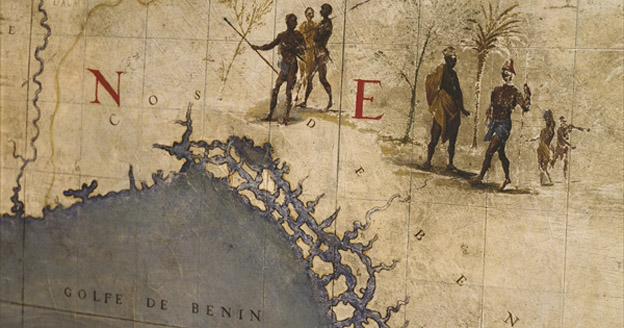
Bibliotheque Nationale, Paris, France/ © Christian Larrieu

